5 steps to buy old laptops
Need to learn about the outside, the screen as well as see the warranty, configuration, status of the connection ports of old laptops when choosing to buy .
A lot of questions arise when users want to buy an old laptop as if the device configuration "standard" such as advertising sellers or connection ports do work well?
Many people think, choosing to buy this "second-hand" laptop needs the help of a hard-core expert, but in reality this is not as difficult as it seems.
Here are 5 very simple steps to successfully choose an old-fashioned laptop as instructed by Cnet technology magazine.
Step 1: Check carefully but damage outside
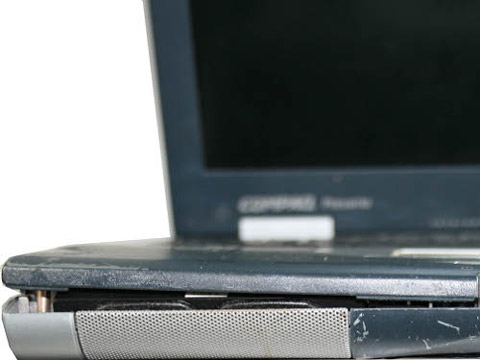
Need to check the external status of the laptop. Photo: Cnet .
Users cannot set high requirements for "looks" for used laptops, because they will inevitably be scratched but will need to pay special attention to the following points:
- Loose pins (USB, VGA, .)
- Cracks, cracks in the case reveal parts inside.
- The screws on the bottom of the machine have been lost or leaked.
- The warranty stamp of the machine is removed or torn.
Even if the above conditions were met, there was no guarantee that the laptop was badly damaged and then "rebuilt" as new. So users will need to continue the next checkout.
Step 2: Check the machine warranty status
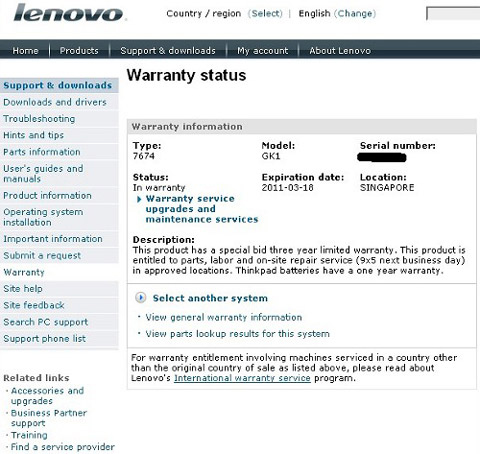
See the warranty period for older laptops. Photo: Cnet .
Ideally, if the old laptop has a genuine warranty, and what the user needs to do is ask for a warranty card or first-time purchase invoice. Commitments from vendors such as those registered for online warranty, except for Lenovo ThinkPad business laptops, should not be immediately believed.
If the old laptop does not have any information, the buyer needs to ask the seller for a minimum warranty period of one week to verify the quality of the machine and should have a clear written warranty commitment with full authentication information from the seller. If not, look for another store.
Step 3: Check the machine configuration
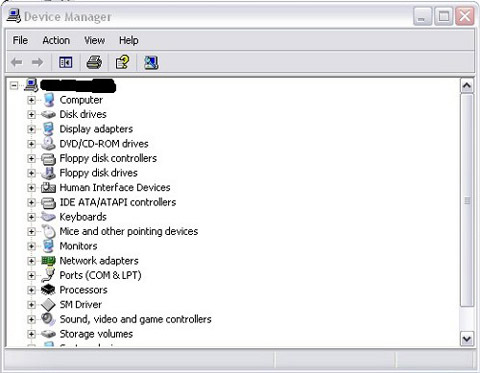
View the configuration of the device is also essential. Photo: Cnet .
If you have studied carefully and have sufficient information about the machine configuration, the buyer should print out a copy to directly check when buying the device.
- Right-click on the "My Computer" icon on the desktop and select "Properties", will display a notice board full of information about the operating system, processor, and RAM of the device.
- Click the left mouse button on "My Computer" and then check the hard drive capacity.
- Click " Control Panel " on the window pane, point to " System ", " Hardware " tab and select " Device Manager ". Or you can access it quickly by right-clicking on " My Computer " and immediately selecting " Device Manager ". In this section you will get detailed information about hardware components including Wi-Fi or Bluetooth cards.
- In the " Accessories " section of the window panel, open the "Command Prompt" program and type the " dxdiag " command to view the machine's graphic information.
Step 4: Check the working status of the charger and communication ports
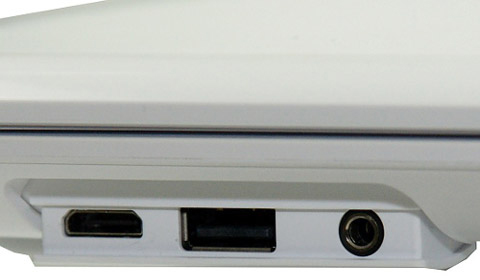
See if the communication ports on the device still work. Photo: Cnet .
USB port will be used most often and is also the most easily encountered part. Remember to bring a USB to check if these ports work. Be more careful you should gently shake the USB when plugging in to see if the plug is still secure.
More cautious than customers should bring some extra devices to check the remaining ports. It is also important to plug in the charger to check if this device is working properly.
Also, it is important to know that the battery pack will be "degraded" after a long time of use, so it is not too important to respect the battery's working status unless the seller promises it to be a new battery. In this case, the buyer can use BatteryCare software running on the Windows operating system to check the capacity and charging time of the Battery. For Macs, users can select " Applications > Utilities > Systems Profiler " for details about the device's battery information.
Step 5: Check dead spots on LCD screens (dead pixels)
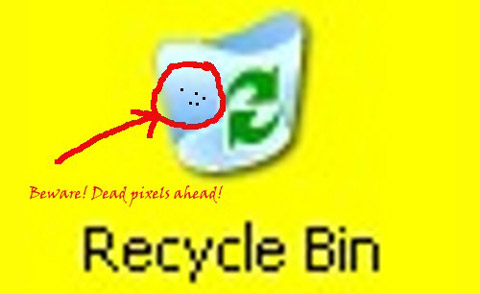
Find "dead spots" on the screen. Photo: Cnet .
The common problem with old monitors is dead spots / dead pixels. Dead pixels - "black dead spots" are points that keep the color black in all cases. Stuck pixels - "light dead spots" are light spots that don't go away until they are turned off.
Pixel Tester, a free software that checks and detects "dead pixel" and "pixel stuck" spots on the laptop screen. But there is a simpler and more convenient way, after removing all the icons on the working screen, users just left-click on the middle of the screen and select "Properties", then set the "background" mode to color. black to check "stuck pixels", then turn white to detect "dead pixels". Usually the warranty does not apply to old laptops with faulty displays, buyers must "struggle" to decide whether to live with that condition or not.
You should read it
- Tips to overcome laptop battery charging error
- Notes when choosing to buy a laptop
- Cause the laptop lost sound, tips repair laptop lost sound
- To buy an old laptop like that
- How to choose laptop CPU that meets the needs (part 2)
- Basic knowledge of SEO
- A few things to keep in mind when choosing to buy a laptop under VND 10 million
- 3 simple tips that laptop users should know
May be interested
- Ranking the best laptops in early 2025
 here are the best laptops of 2025 based on testing and reviews by tech experts.
here are the best laptops of 2025 based on testing and reviews by tech experts. - 8 user habits 'kill' the laptop faster
 owning and proficiently using a laptop today is no longer difficult, but to use it properly, not everyone knows.
owning and proficiently using a laptop today is no longer difficult, but to use it properly, not everyone knows. - How to check old laptop, test the machine before buying
 checking your old laptop when buying helps you evaluate the old laptop exactly, promptly detect the problem to fix. this is the secret of the old laptop buyer, providing the factors to consider, checking when buying old laptop, you pay attention.
checking your old laptop when buying helps you evaluate the old laptop exactly, promptly detect the problem to fix. this is the secret of the old laptop buyer, providing the factors to consider, checking when buying old laptop, you pay attention. - Laptops reduce prices much pushing demand to rise
 overcoming the general difficulties of the economy and the erratic fluctuation of exchange rates over time, many computer enterprises said that the consumption of laptops is the brightest point.
overcoming the general difficulties of the economy and the erratic fluctuation of exchange rates over time, many computer enterprises said that the consumption of laptops is the brightest point. - 10 ways to avoid losing laptops and data when traveling
 laptops gradually become an indispensable device for people who often travel. here are 10 tips to protect laptops and confidential documents in laptops.
laptops gradually become an indispensable device for people who often travel. here are 10 tips to protect laptops and confidential documents in laptops. - Top 5 laptops 'terrible'
 here is a list of 5 very powerful laptops voted by pc world magazine as the best current to replace desktop computers.
here is a list of 5 very powerful laptops voted by pc world magazine as the best current to replace desktop computers. - The best cheap laptops
 these laptops and chromebooks are under $500 and won't drive you crazy.
these laptops and chromebooks are under $500 and won't drive you crazy. - Connect 2 Windows XP laptops without cables
 connecting two laptops, or connecting two computers without cables you will need to go through several setup steps. to connect 2 desktops, 2 computers must have a wifi transceiver.
connecting two laptops, or connecting two computers without cables you will need to go through several setup steps. to connect 2 desktops, 2 computers must have a wifi transceiver. - Top 5 best Asus laptops 2020
 asus is a big name in the computer and laptop market, it is quite difficult to choose the name that represents the best of this manufacturer.
asus is a big name in the computer and laptop market, it is quite difficult to choose the name that represents the best of this manufacturer. - 5 things to keep in mind when buying student laptops
 on the market today, choosing a laptop is not too difficult. however, it is not easy to choose a product that suits the needs of the students.
on the market today, choosing a laptop is not too difficult. however, it is not easy to choose a product that suits the needs of the students.










 Laptop sold in September 09
Laptop sold in September 09 Distinguish laptops of type 2 and type 3
Distinguish laptops of type 2 and type 3 New laptop entry and 'error'
New laptop entry and 'error' Buy adapters for laptops
Buy adapters for laptops 10 reasons you should buy a business laptop
10 reasons you should buy a business laptop Choose to buy a portable hard drive
Choose to buy a portable hard drive